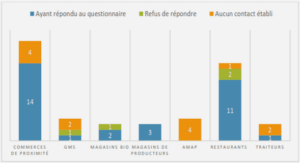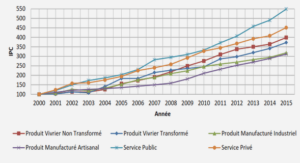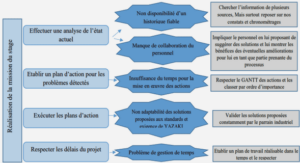FLUIDIZED BED TECHNOLOGY
METHODOLOGY AND EXPERIMENTAL PROCEDURES
INTRODUCTION
The experimental procedure designed for this specific work aimed at investigating the influence of various metallurgical parameters on the tensile properties and quality indices of B319.2 type Al-8%Si-3%Cu-0.25%Mg and A356.2 type Al-8%Si-0.35%Mg casting alloys used in the automotive industry. The metallurgical parameters investigated include heating rate; cooling rate; solution heat treatment time; aging time; and aging temperature. The performance of these alloys has been studied after applying conventional continuous T6-aging treatments and non-conventional ones including different heat treatment media as well as multi-temperature aging cycles. In the present study, the fluidized sand bed technique was employed to investigate its effect, as a heating and/or quenching medium, on the heat treatment characteristics of the alloys studied. A relevant comparison of the fluidized sand bed as the heat treatment medium was made with that of conventional furnace heat treatment by using an air forced convection furnace for heating and quenching; water was also used for quenching, in order to obtain different cooling rates. The relevant details concerning the alloys studied, heat treatment cycles applied and the heat treatment technique used in this work are provided in the following subsections together with a description of the general melting and casting procedures applied. The various techniques employed for microstructural characterization, namely, optical microscopy, scanning electron microscopy, and field emission gun scanning electron microscopy, and details of the tensile testing procedures applied for evaluating the mechanical properties of the alloys investigated are also provided.
CASTING PROCEDURES
The 356 and 319 alloys received in the form of ingots were melted in a silicon carbide crucible of 150-kg capacity, using an electrical resistance furnace; the melting temperature was held at 740° ± 5°C. The molten metal was degassed for 30 minutes using pure dry argon injected into the molten metal (at a flow rate of 30 ft3 h »1) by means of a rotary graphite degassing impeller, rotating at a speed of 150 rpm for 30 minutes, in order to minimize the hydrogen level of the melt, and to eliminate inclusions and oxides via flotation. After degassing, the melt surface was carefully skimmed to remove the oxide layers and prevent it from entering the casting mold during pouring.
Melt treatments viz., modification and grain refining were applied to half of the molten metal used, to study the performance of modified and grain refined cast alloys, coded K3 and K4, and compare them with their non-modified counterparts, namely Kl and K2 alloys, following heat treatment using the FB vs the CF technique. For modification purposes, 200 ppm Sr was added to the melt, in the form of rods of Al-10%Sr master alloy; the melts of the modified alloys were then grain refined using Al-5%Ti l%B master alloy, added to the degassed melt prior to casting.
Samplings for chemical analysis were taken from each alloy melt. The chemical analysis was carried out using arc spark spectrometry at GM facilities in New Hampshire.
Analyzer that was employed for this purpose. With respect to the alloy codes, Kl and K3 represent the non modified and Srmodified A3 56.2 alloys, respectively, while K2 and K4 correspond to the non-modified and modified B319.2 alloys.
The actual chemical compositions of the alloys used in this study are shown in Table 3.1, and represent the average composition of three readings taken per sample. The degassed melt in each case was carefully poured into an ASTM B-108 type permanent mold preheated to 500°C, to prepare tensile test castings; each casting provided two test bars. The melt pouring temperature was 740± 5°C, with humidity in the range of 11-15%, and a melt hydrogen level of 0.1 ml/100g. Five tensile test bars were used for each alloy/heat treatment condition studied. Figures 3.2 (a), (b) and (c) show the actual standard mold used for casting and the corresponding casting, with the dimensions of the tensile test specimens, respectively.
HEAT TREATMENT PROCEDURES
The samples obtained from the cast alloys K1-K4 were first solution heat-treated and then quenched in different media, whether water or sand; the artificial aging treatment was subsequently carried out by applying either T6 continuous or T7/T6 multi-temperature cycles in the same furnace. A conventional forced air furnace (CF) as well as a fluidized bed furnace (FB), both shown in Figure 3.3, were used for heat treatment purposes to establish a relevant comparison between the two heat treatment techniques. The convection furnace used for conventional heat treatment is a Lindberg/Blue M electric resistance airforced furnace where the temperature may be controlled to within ±1 °C.The heat treatment process using a Fluidized Bed Technique (FBT) was carried out at General Motors (GM) facilities. The fluidized bed used in this study consists of finely divided particles, usually sand, which are made to behave like a fluid. The sand bed material is olivine sand which is free from silica. The fluidization gas is air drawn in from the atmosphere and blown in through pipes beneath the electric heater tubes to be found at the bottom of the fluidized bed. The main heat transfer mechanism, to transfer heat energy into the sand bed, is the presence of indirect electric elements which heat the bed. This method of energy transfer by radiation to the sand using the electric elements is efficient, in addition to that utilizing the fluidization air to transfer the heat by convection. Heat-treated samples submerged into an isothermal sand bed have complete free surface contact with the sand, where the transfer of heat energy to the samples takes place by conduction, convection and radiation modes through all contact surfaces. This fluidized bed technique, as indicated in the literature, facilitates rapid energy transfer into the part, resulting in faster times of less than 10-15 minutes to process solution treatment temperatures of 495-530°C, compared to 30 minutes to process aging temperatures of 155-180°C using a convection furnace as illustrated in Figure3.4.
|
Table des matières
RÉSUMÉ
ABSTRACT
ACKNOWLEDGEMENTS
PUBLICATIONS
TABLE OF CONTENTS
LIST OF FIGURES
LIST OF TABLES
CHAPTER 1
DEFINITION OF THE PROBLEM
1.1. INTRODUCTION
1.2. OBJECTIVES
CHAPTER 2
SURVEY OF THE LITURATURE
2.1. INTRODUCTION
2.2. HEAT TREATMENT SYSTEMS
2.2.1. Conventional Heat Treatment procedures
2.2.2. Precipitation Hardening of Al-Si-(Cu/Mg)Castings
2.2.3. Heat Treatment Media
2.3. FLUIDIZED BED TECHNOLOGY
2.3.1. Fluidization Phenomenon and Modern Fluidized Sand Bed
2.3.2. Development of Fluidized Sand Bed for Heat Treatment of Aluminum Alloys
2.4. QUALITY INDICES
CHAPTER 3
METHODOLOGY AND EXPERIMENTAL PROCEDURES
3.1. INTRODUCTION
3.2. CASTING PROCEDURES
3.3. HEAT TREATMENT PROCEDURES
3.4. MECHANICAL TESTING
3.5. MICROSTRUCTURAL CHARACTERIZATION
CHAPTER 4
INFLUENCES OF MELT AND SOLUTION HEAT TREATMENTS ON ALLOY PERFORMANCE
4.1. INTRODUCTION
4.2. CHARACTERIZATION OF THE MICRO STRUCTURE
4.2.1. Characteristics of Eutectic Silicon Particles
4.2.2. Grain Size and Porosity Measurements
4.2.3. Copper-Rich Intermetallics
4.2.4. Hardening Precipitates
4.3. TENSILE PROPERTIES
4.3.1. Al-Si-Mg Alloys
4.3.2. Al-Si-Cu-Mg Alloys
4.4. ANALYSIS OF QUALITY CHARTS
4.4.1. Al-Si-Mg Alloys
4.4.2. Al-Si-Cu-Mg Alloys
4.4.3. Selection of Metallurgical Parameters Using Quality Index Maps
4.5. STATISTICAL ANALYSIS
4.6. FB-HIGH HEATING RATE AND AGING CHARACTERISTICS
4.7. CONCLUSIONS
CHAPTER 5
INFLUENCES OF QUENCHING MEDIA, AND AGING ARAMETERS
5.1. INTRODUCTION
5.2. TENSILE PROPERTIES
5.2.1. Al-Si-Mg Casting Alloys
5.2.2. Al-Si-Cu-Mg Casting Alloys
5.3. QUALITY INDICES
5.3.1. Al-Si-Mg Casting Alloys
5.3.2. Al-Si-Cu-Mg Casting Alloys
5.3.3. Statistical Analysis for Quality Results of Al-Si-(Cu/Mg) Casting Alloys
5.4. CONCLUSIONS
RECOMMENDATIONS FOR FUTURE WORK 247
REFERENCES
APPENDIX
![]() Télécharger le rapport complet
Télécharger le rapport complet




